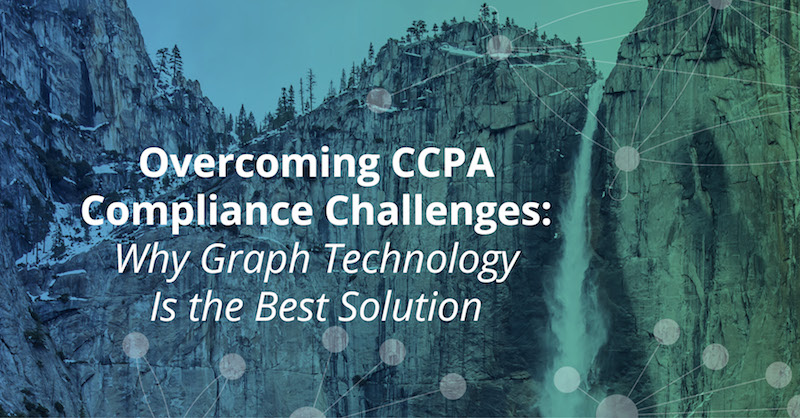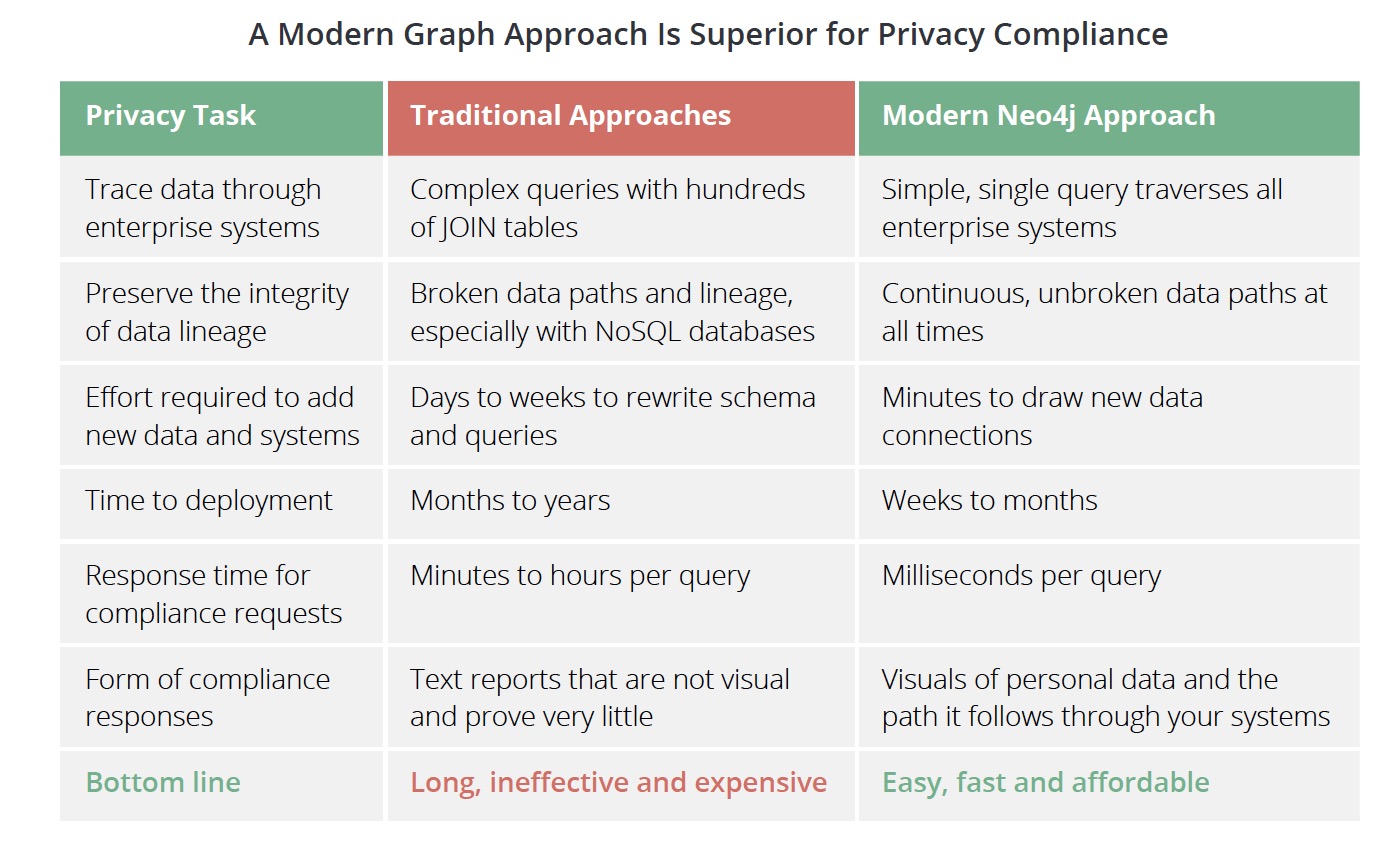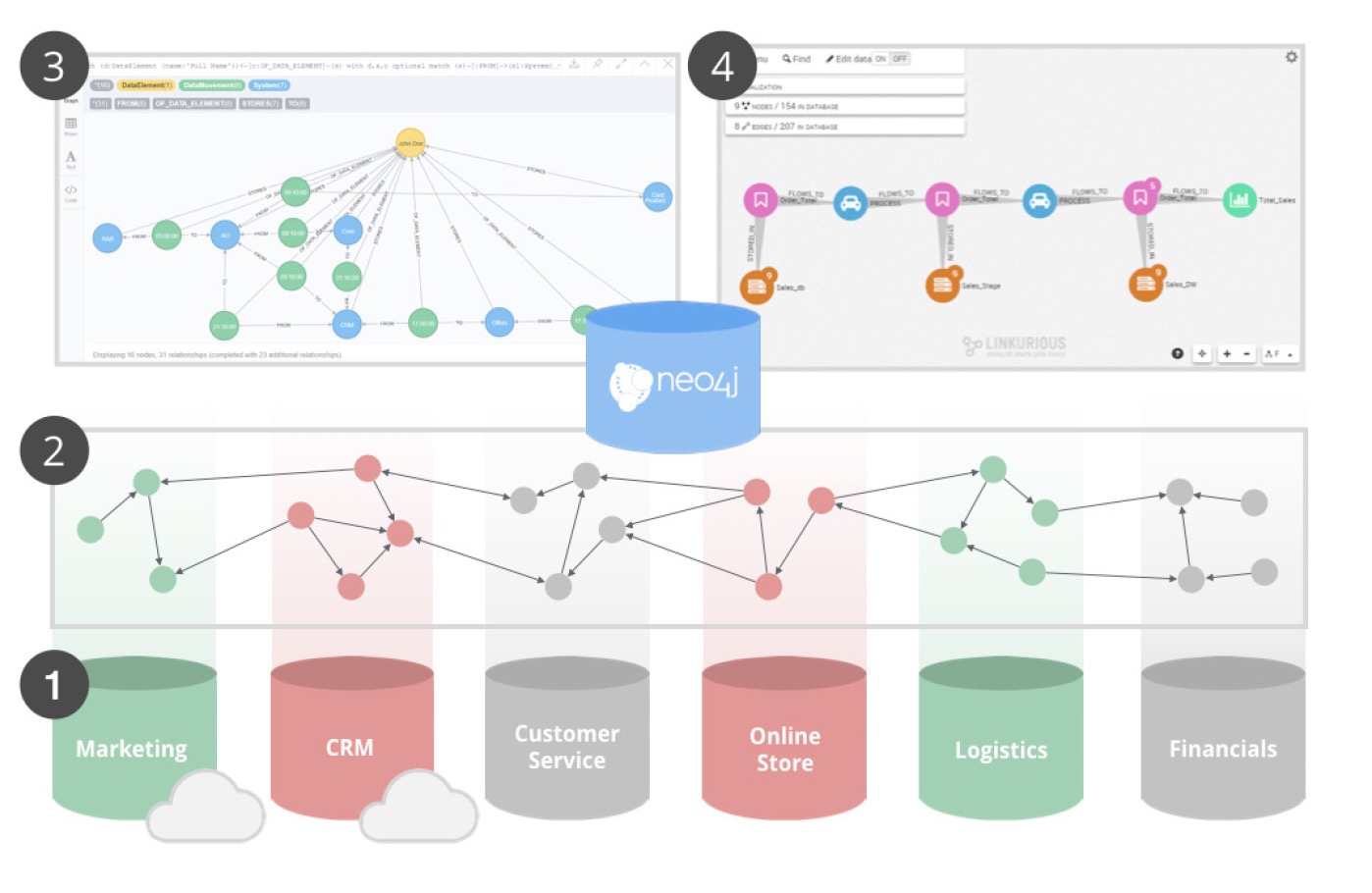Nevada and New York have also introduced their own privacy regulations. Canada and Mexico, as well as Texas, Washington and many other states are watching the personal data privacy narrative as it unfolds in California.
In this third and final installment in our blog series on CCPA, we will show why graph technology is the best solution for data privacy compliance and outline four steps to personal data privacy compliance.
Why Graph Technology Is Superior for Privacy Compliance
The complex data lineage problems posed by privacy regulations are impossible to solve with relational and most NoSQL technologies. A modern graph database platform like Neo4j is a superior foundation for addressing the connected data requirements of privacy compliance.
RDBMS Cannot Handle Connected Data
Relational database (RDBMS) technologies are built for managing highly structured datasets that change infrequently and have minimal numbers of connections.
To connect all your private personal data, you need a colossal maze of JOIN tables and many thousands of lines of SQL code. Those queries require several months to develop and are nearly impossible to debug and maintain as you add more systems and data relationships. Most importantly, queries of such complexity take hours to days to execute and easily hang your server.
Non-Native Graph Technologies Break Down
Some NoSQL and relational databases claim to have graph capabilities. In reality, they have cobbled a graph layer onto their non-graph storage models.
These non-native approaches inevitably omit key system connections and break personal data lineage, making them easy targets for regulators. Neo4j is a native graph database that stores and connects data as a graph – just as you visualize it – making Neo4j the ideal technology for privacy compliance.
A Picture Is Worth a Thousand Words: Proving Privacy Compliance
The ultimate test for any personal-privacy technology is its ability to satisfy regulators and consumers that your organization is in compliance.
Traditional approaches produce tabular output that is hard to trace. In contrast, Neo4j produces simple, easily understood visualizations of how personal data flows through all your systems.
Four Steps to Personal Data Privacy Compliance
Follow these steps to build your organization’s personal data privacy solution using the Neo4j Graph Platform as its foundation:
STEP 1: Inventory Your Systems
Identify all enterprise systems that use or could potentially use private personal information. Document where and how those systems store personal data.
STEP 2: Build Your Logical Data Model
Build a logical model of personal data elements, and how and when they flow across your systems. Define system connections including metadata that describes and quantifies them.
STEP 3: Develop and Test Your System
Using your logical data model, load your data into Neo4j. Then leverage Neo4j’s Privacy Shield Framework to develop and test your solution by creating simple queries and reports that address personal data privacy requirements like CCPA and GDPR.
STEP 4: Visualize and Respond to Compliance Requests
Use the Neo4j graph database and data visualization tools like Neo4j Bloom to display the flow of personal data across your systems. Quickly answer questions from regulators and consumers alike about how personal data is being used by your organization.
Conclusion
As we have shown in this third and final installment of our series on CCPA compliance, privacy regulators in Europe and the U.S. are serious about protecting the privacy of their citizens’ data.
With the leading graph database and our Privacy Shield Framework, Neo4j propels your organization down the fastest, most cost-effective path to personal privacy compliance.
Get My White Paper






